Growing your vegetables at home may help you save money and give you a closer connection to the natural world, all at the same time. Garden-grown vegetables and fruits taste and feel much better than those you buy at the supermarket. Maintaining a food garden also provides physical activity. A planting schedule is a necessity if you want a successful gardening season. Below we learn the Seed sowing chart, planting schedule, and germination guide for different fruits, vegetables, flowers, herbs, and fruits.
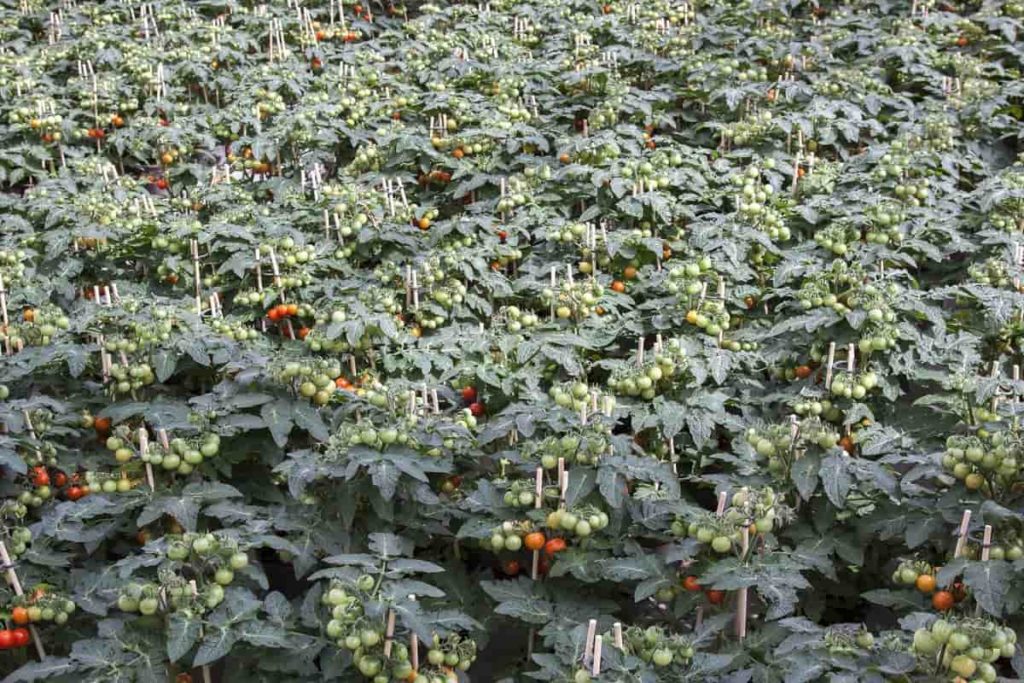
Seed sowing chart in India
Vegetable planting time and germination chart
| Vegetable | North India growing season | South India growing season | Germination temperature (degrees C) |
| Melon | Feb to Mar June to July | Jan to Feb Mar to June Oct to Dec | 22 to 32 |
| Corn | Oct to Nov | Sept to Oct | 10 |
| Pumpkin | Jan to Mar Sep to Dec May to June | June to July Dec to Jan | 20 to 35 |
| Potato | Oct to Dec | Oct to Dec | 4 |
| Cauliflower (early) | Mid-June | June to July Aug to Sep | 25 to 27 |
| Cauliflower (late) | Aug to Sep Oct | June to July | 16 to 20 |
| Cauliflower (midseason) | Jun to July Aug to Sept | June to July Aug to Sep | <16 |
| Turnip | Oct to Nov | Oct to Nov | 15 to 35 |
| Tomato | June to Aug Nov to Dec | Jan to Feb June to July Oct to Nov | 20 to 30 |
| Spinach | Sept to Nov Feb | Sept to Nov | 10 to 22 |
| Radish | Aug to Jan | –it depends– | 10 to 30 |
| Peas | Sept to Oct Nov | Sept to Nov | 10 to 22 |
| Onion | May to June | Mar to April May to June Sept to Oct | 10 to 32 |
| Okra | Feb to March June to July | Jan to Feb May to June Oct to Dec | 20 to 32 |
| Lettuce | Sept to Oct | Oct to Dec | 7 to 27 |
| Beans | Feb to Mar | — | 16 to 30 |
| Cucumber | Feb to Mar June, July | June to July Sept to Oct Dec to Jan | 16 to 32 |
| Carrot | Aug to Oct | Aug to Nov | 10 to 30 |
| Capsicum | Nov to Jan May to June | Jan to Feb May to June Oct to Nov | 15 to 25 |
| Cabbage | Sept to Oct | June to July Oct to Nov | 10 to 20 |
| Broccoli | Aug to Sept | Aug to Sept | 21 to 23 |
| Bottle gourd | Feb to Mar June to July | Nov to Dec Dec to Jan June to July | 20 to 30 |
| Bitter gourd | Feb to Mar June to July | Nov to Dec Dec to Jan, Jun to July | 20 to 30 |
| Beetroot | Oct to Nov | Aug to Nov | 10 to 30 |
| Apple gourd | Feb to Mar June to July | Feb to Mar June to July | 20 to 30 |
In case you missed it: Fertilizer Management in Potatoes: Organic, Compost Manure, NPK, and Schedule
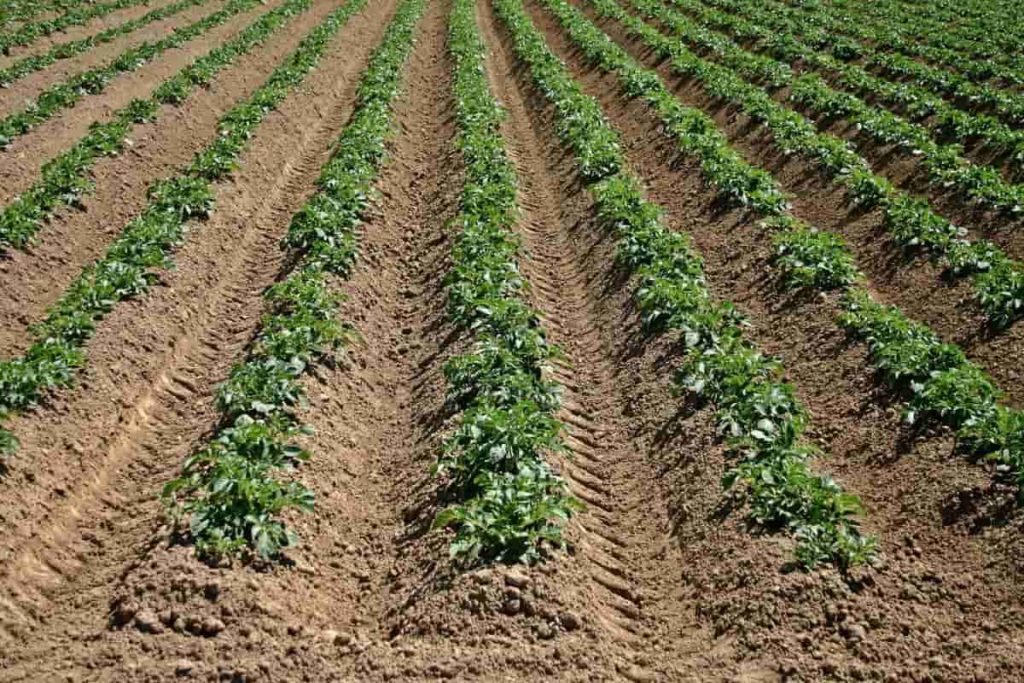
Vegetable sowing guide
| Vegetable | Method of sowing | Depth for sowing inches) | Sowing distance (inches/feet) | Days to maturity |
| Melon | Direct | 1 | Between rows: 18” to 24” | 70 to 85 days |
| Corn | Direct | 1 to 1.5 | Between rows: 30” to 36” Between seeds: 4“ to 6“ | 60 to 100 days |
| Pumpkin | Direct | 1 | Between seeds: 24“ to 48“ | 70 to 75 days |
| Potato | Direct | 4 | Between rows: 12“ to 18“ | 70 to 120 days |
| Cauliflower (early) | Transplant | 0.5 | Between rows: 2 ft Between seeds: 2 ft | 120 to 125 days |
| Cauliflower (late) | Transplant | 0.5 | Between rows: 2 ft Between seeds: 2 ft | 120 to 125 days |
| Cauliflower (midseason) | Transplant | 0.5 | Between rows: 2 ft Between seeds: 2 ft | 120 to 125 days |
| Turnip | Direct | 0.5 | Between rows: 1.5 ft Between seeds: 4” | 40 to 50 days |
| Tomato | Transplant | 0.25 | Between rows: 2.5 ft Between seeds: 1 ft | 110 to 115 days |
| Spinach | Direct | 0.5 | Between rows: 9 ft Between seeds: 3 ft | 60 days |
| Radish | Direct | 0.5 | Between rows: 12” Between seeds: 2“ to 3“ | 40 to 45 days |
| Peas | Direct | 1 | Between rows: 12“ Between seeds: 4“ | 55 to 60 days |
| Onion | Transplant | 0.25 | Between rows: 6 ft Between seeds: 4 ft | 150 to 160 days |
| Okra | Direct | 0.5 | Between rows: 18“ Between seeds: 12“ | 45 to 50 days |
| Lettuce | Direct/ Transplant | Surface sow, cover lightly with soil | Between rows: 8“ to 12“ | 45 to 55 days |
| Beans | Direct | 1 to 1.5 | Between rows: 18“ Between seeds: 8“ | 45 to 50 days |
| Cucumber | Direct | 0.5 | Between rows: 12“ | 50 to 70 days |
| Carrot | Direct | 0.25 | Between rows: 1.5 ft Between seeds: 2“ | 75 to 80 days |
| Capsicum | Transplant | 0.25 to 0.5 | Between rows: 1.5 ft Between seeds: 1.5 ft | 95 to 100 days |
| Cabbage | Transplant | 0.25 | Between rows: 1.5 ft Between seeds: 1 ft | 90 to 100 days |
| Broccoli | Transplant | 1.5 | Between rows: 1.5 ft Between seeds: 1 ft | 90 to 100 days |
| Bottle gourd | Direct | 1-2 | Between rows: 4 ft Between seeds: 1 ft Between rows: 4 ft Between seeds: 1 ft | 55 to 60 days |
| Bitter gourd | Direct | 0.5 | Between rows: 4 ft Between seeds: 1 ft | 55 to 60 days |
| Beetroot | Direct | 1 | Between rows: 18“ Between seeds: 4” | 80 to 90 days |
| Apple gourd | Direct | 1 | Between rows: 12“ Between seeds: 12“ | 70 to 80 days |
In case you missed it: Best Fertilizer for Sunflower Crop: Organic, NPK, Compost Manure, and Schedule
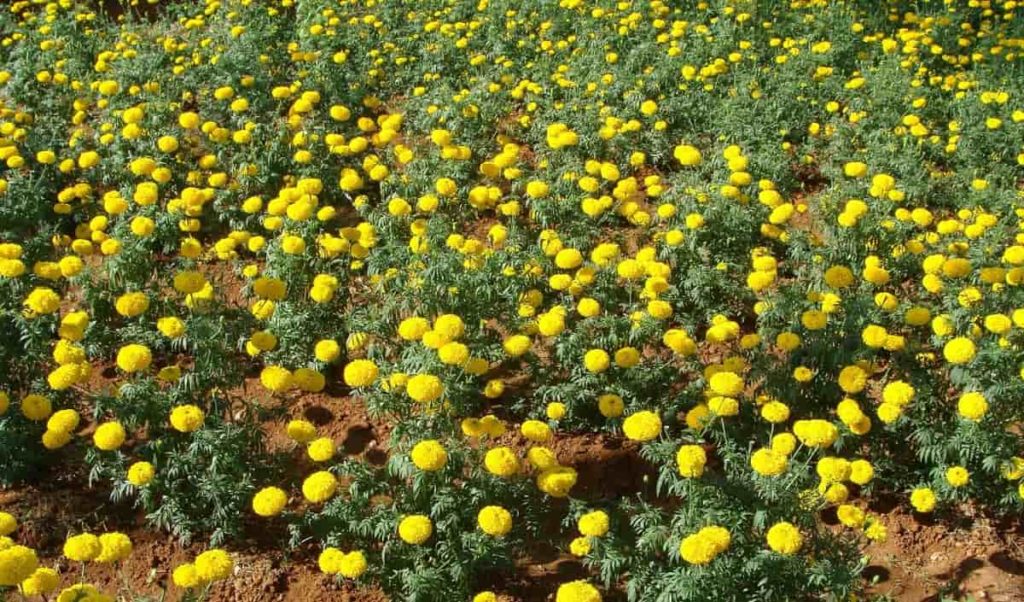
Flowers seed sowing chart and planting guide
| Flowers | Start seeds in these months | Sowing depth | Space between seeds (in inches and feet) | Germination time |
| Ageratum | Sep to Nov | 0.3 inch | 9” to 12” | 7 to 10 days |
| Hollyhock | Sep to Oct | 0.25 inch | 2 ft | 10 to 14 days |
| Snapdragon | Sep to Nov | 0.3 inch | 6” to 12” | 10 to 21 days |
| African daisy | Sep to Oct Mar to Apr | 0.2 inch | 9” to 12” | 15 to 20 days |
| China aster | Sep to Oct July to Aug | 0.1 inch | 3” to 4” | 10 to 14 days |
| Cockscomb | Jan to Feb May to June Sep to Oct | 1.5 inch | 4” | 7 to 14 days |
| Cornflower | Sep to Oct | 1 to 1.5 inch | 2” | 7 to 10 days |
| Spider plant | Sep to Oct Jan to Feb | 0.5 inch | 2” to 3” | 14 to 20 days |
| Indian pink | Sep to Nov | 1 to 2 inch | 6” to 18” | 7 to 14 days |
| Sunflower | Jan to June | 2 inch | 6” | 7 to 10 days |
| Balsam | Jan to Feb | 0.12 inch | 12” to 14” | 4 to 5 days |
| Forget me not | Sep to Oct | 3 inch | 10” | 8 to 14 days |
| Petunia | Aug to Oct | 8 to 10 inch | 12” | <7 days |
| Phlox | Aug to Oct | 1 inch | 18” | 5 to 10 days |
| African marigold | Sep to Oct | 0.25 inch | 12” | 4 to 14 days |
| French marigold | Sep to Oct Mar to Apr | 4 inch | 6” to 9” | 7 to 14 days |
| Zinnia | Jan to June | 0.25 inch | 4” to 24” | 7 to 10 days |
| Rose | Sep to Oct | 4 inch | 2 ft | 4 to 8 weeks |
| Lotus | Apr to June | 4 inches (mudball into the water) | – | < 1 week |
| Dahlia | Apr to mar | 6 to 8 inch | 12” to 18” | 7 to 10 days |
| Plumeria | Mar to June | 1.5 to 2 inch | 4 to 6 ft | 3 to 14 days |
| Lily | June to July | 7 inch | 7” | 9 to 18 days |
| Daisies | Mar to Apr | 0.25 inch | 1 to 2 ft | 10 to 20 days |
| Iris | Late July to mid-Aug | 4 inch | 2” to 4” | 28 to 35 days |
| Pansies | July to Oct | 4 to 5 inch | 6” to 10” | 1 to 3 weeks |
| Poppy | Mar to May | 0.25 inch | 6” to 12” | 7 to 14 days |
| Canna | Mar to Apr | 2 to 3 inch | 2” | 7 to 14 days |
In case you missed it: A Step-By-Step Guide to High Density Fruit Farming: For Guava, Banana, Mango, Pineapple, Lemon, Papaya, Litchi, and Apple
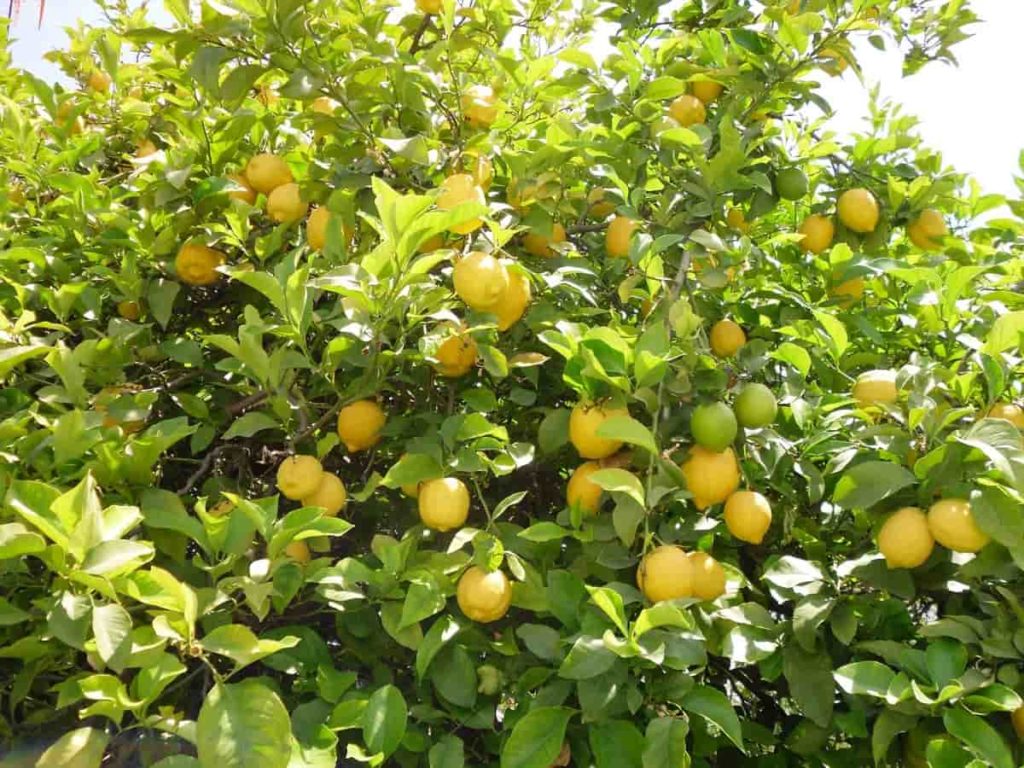
Fruits seed sowing chart and planting guide
| Fruits | Sowing time | Sowing depth | Space between seeds (in inch, m, and ft) | Germination time |
| Watermelon | Feb to Mar (in the north) Year-round (in the south) | 1 inch | Between rows: 7 to 10 ft Between seeds: 6 ft | 6 to 7 days |
| Banana | June to July, Oct to Nov | 40 inch | Between rows: 1.8 m Between seeds: 1.8 m | 2 to 3 weeks |
| Orange | Dec to Feb Oct to Mar | 14 inch | Between rows: 6 m Between seeds: 6 m | 6 to 8 weeks |
| Pineapple | July to Sep | 3 to 4 inch (crown) | Between rows: 90 cm Between seeds: 60 cm | About six months |
| Lychee | Aug to Sep | 1 inch | Between rows: 8 m Between seeds: 8 m | 1 to 4 weeks |
| Mango | Aug to Oct | 19 ft | Between rows: 10 m Between seeds: 10 m | 2 to 4 weeks |
| Strawberry | Sep to Oct | 4 to 6 inch | Between rows: 60 cm Between seeds: 30 cm | Seven days to 6 weeks |
| Grapes | Feb to Mar Dec to Jan | 60 to 90 cm | Between rows: 1.8 m to 2.4 m Between seeds: | 10 to 15 days |
| Custard apple | April to May | 3 cm | Between rows: 4 to 6 m Between seeds: 4 to 6 m | Three weeks |
| Sapota | June to Dec | 30 to 45 cm | Between rows: 10 m Between seeds: 8 m | 2 to 4 weeks |
| Lemon | June to July | 0.5 inch | Between rows: 4.5 m Between seeds: 4.5 m | Know |
| Kinnow | Aug to Oct | 1 m | Between rows: 60 cm Between seeds: 60 cm | 7 to 14 days |
| Mosambi | Aug to Sep April to May | 60 cm | Between rows: 60 cm Between seeds: 60 cm | 3 to 4 weeks |
| Papaya | Feb to Mar June to July Oct to Nov | 45 cm | Between rows: 1.8 m Between seeds: 1.8 m | 2 to 3 weeks |
| Pear | June to Dec | 2 m | Between rows: 8 m Between seeds: 4 m | 2 to 4 weeks |
| Peach | Late Jan | 4 inch | Between rows: 4 m Between seeds: 4 m | 1 to 3 months |
| Apple | Jan to Feb | 2 ft | Between rows: 4 m Between seeds: 4 m | Around 30 days |
| Figs | Jan to Feb (north India) Aug to Sep (south India) June to July (western India) | 2 to 4 inch | Between rows: 5 m Between seeds: 5 m | 1 to 2 weeks |
| Plums | January | 3 inch | Between rows: 4 m Between seeds: 4 m | 10 to 18 days |
| Jackfruit | June to Dec | 2 ft | Between rows: 8 m Between seeds: 8 m | 3 to 8 weeks |
| Guava | June to Sep | 0.5 to 1 m | Between rows: 6 m Between seeds: 6 m | 2 to 8 weeks |
| Pomegranate | June to July Sep to Oct to Feb | 2 inch | Between rows: 6 m Between seeds: 5 m | 30 to 40 days |
| Apricot | May to June October | 5 to 10 cm | Between rows: 6 m Between seeds: 6 m | 1 to 2 months |
| Apple ber | July to Aug | 60 cm | Between rows: 7 m Between seeds: 7 m | 2 to 4 weeks |
| Kiwi | Jan | 2 ft | Between rows: 4 m Between seeds: 6 m | Around two weeks |
| Rambutan | Dec to Jan | 2 to 3 m | Between rows: 6 m Between seeds: 6 m | 10 to 21 days |
| Persimmons | March to April | 2 inch | Between rows: 4 to 6 m Between seeds: 4 to 6m | 2 to 3 weeks |
| Jamun | Feb to Mar July to Aug | 4 to 5 cm | Between rows: 15 cm Between seeds: 25 cm | 10 to 15 days |
| Coconut | May to June | 1.2 to 1.6 m | Between rows: 8 m Between seeds: 8 m | 3 to 6 months |
In case you missed it: Top 19 Steps/Ways/Methods to Boost Mint Yield: How to Increase Production and Quality
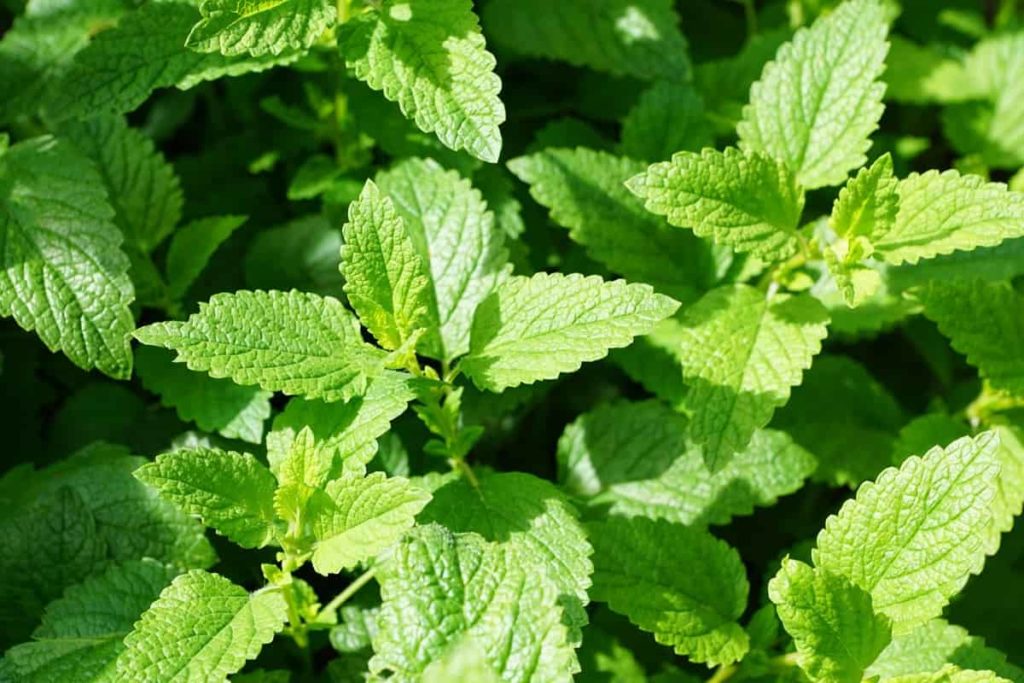
Herbs seed sowing chart and planting guide
| Herbs | Sowing time | Sowing depth | Space between seeds (in inches and feet) | Germination time |
| Cumin | Oct to Nov | 0.25 inch | Between rows: 18” Between seeds: 4 to 8” | 7 to 14 days |
| Coriander | Sept to Oct | 0.5 inch | Between rows: 15” Between seeds: 8 to 10” | 2 to 3 weeks |
| Fenugreek | June to July October | 1.5 inch | Between rows: 4” Between seeds: 2” | 3 to 5 days |
| Mustard | Sep to Oct | 1 to 2 inch | Between rows: 6 “ Between seeds: 1“ | 7 to 10 days |
| Holy basil | Feb to Mar | 1.5 inch | Between rows: 4 to 8” Between seeds: | 7 to 10 days |
| Ginger | Mar to April | 2 to 4 inch | Between rows: 7 to 10” Between seeds: 7 to 10” | 6 to 8 weeks |
| Turmeric | Mar to Apr | 3 inch | Between rows: 10” Between seeds: 10” Between rows: 10” Between seeds: 10” | 6 to 10 months |
| Lemon grass | Mar to Apr | 3 inch | Between rows: 40 cm Between seeds: 30 cm | Two weeks |
| Parsley | Nov to Jan | 0.25 inch | Between rows: 6” Between seeds: 6” | 7 to 10 days |
| Sage | Feb to Mar | 0.25 inch | Between seeds: 24” to 36” | 10 to 21 days |
| Curry leaves | July to Aug | 0.5 inch | Between rows: 1.5 m Between seeds: 1.2 m | 10 to 15 days |
| Dill | Oct | 0.25 inch | Between seeds: 10 to 12” | 10 to 14 days |
| Mint | Feb to Mar | 0.5 inch | Between seeds: 18 to 24” | 7 to 15 days |
| Oregano | Feb to Mar | 0.25 inch | Between rows: 5” Between seeds: 7” | One week |
| Rosemary | Sep to Oct | 0.25 to 0.5 inch | Between rows: 3 ft Between seeds: 2 ft | 15 to 25 days |
| Thyme | April | 0.25 inch | Between seeds: 12 to 14” | Up to 4 weeks |
| Tarragon | July to Aug | 0.3 inch | Between seeds: 18 to 24” | 10 to 14 days |
| Chives | Mar to July | 0.25 inch | Between seeds: 2” | 7 to 10 days |
Frequently asked questions about vegetable planting calendars
What month is the best month to plant vegetables?
It’s possible to plant edible seeds at any time of the year. The month you plant vegetables depends on your growth zone, climate, and the date of the last forecast frost in your area. If you want to grow tough annual vegetables like broccoli, chard, cabbage, carrots, peas, and parsnips, you need to get their seeds in the ground in the spring, between March and April, when the soil is hottest.
When should tomatoes be planted?
Late spring and early summer are the optimum periods to plant tomatoes. When starting a garden, starter plants are preferable to seeds. Choose a sunny location and plant your tomatoes there. Six to eight hours of sunlight is ideal for growing flavorful tomatoes. Most tomato plants need to be staked, trellised or caged so as not to touch the ground. Decide how you will support your plants before putting them out, and then do so immediately.
Don’t forget to provide some gaps between plants. Indeterminate, hardy varieties should be planted at a distance of 3 feet. Plants with a determinate growth habit benefit from being spaced at 2 feet. A 24-inch pot is recommended for indeterminate varieties, and an 18-inch pot is recommended for determinates when grown in containers. Put only high-quality potting soil in pots.
In case you missed it: Tomato Farming Business Plan: A Production and Cultivation Guide for Beginners
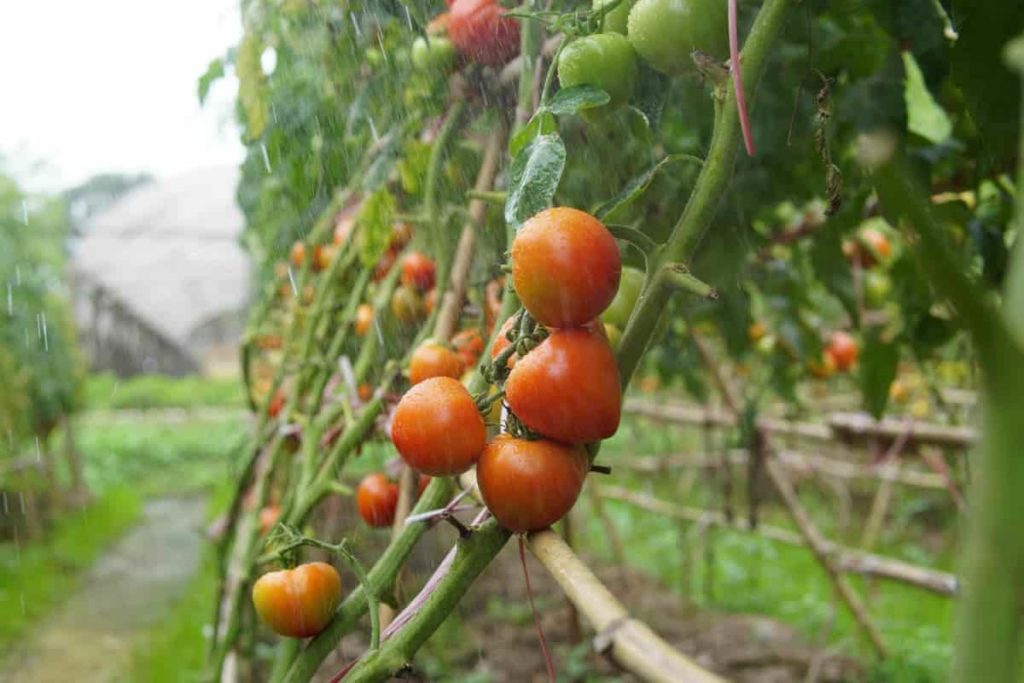
Soil pH between 6.2 to 6.8 is ideal for nutrient absorption by tomatoes, and tomatoes need a steady supply of primary and secondary plant nutrients. As you dig your planting holes, add a continuous-release, calcium-based fertilizer into the soil to provide the necessary nutrients. In the course of the growing season, keep feeding as directed. Since a lack of calcium in the soil can cause blossom end rot in fruit, this could help prevent that.
Conclusion
For novice gardeners, a small area is best to begin with. It’s preferable to be delighted with the results of a little garden than to be dissatisfied with the amount of work required by a massive one. Learning the fundamentals of gardening is recommended before devoting time and money to it.
You’ll get a taste of the time commitment required by gardening. You can see whether tending a garden is something you like doing by spending time in the fresh air and sunshine tending to seedlings, watering, and weeding. You’ll also know how much fruit and vegetables your family can consume.
- Economical Aquaculture: A Guide to Low-Budget Fish Farming
- 15 Common Planting Errors That Can Doom Your Fruit Trees
- How to Make Houseplants Bushy: Effective Tips and Ideas
- Innovative Strategies for Boosting Coconut Pollination and Yield
- Pollination Strategies for Maximum Pumpkin Yield
- The Complete Guide to Chicken Fattening: Strategies for Maximum Growth
- Natural Solutions for Tulip Problems: 100% Effective Remedies for Leaf and Bulb-Related Issues
- Revolutionizing Citrus Preservation: Towards a Healthier, Greener Future
- Natural Solutions for Peony Leaf and Flower Problems: 100% Effective Remedies
- Maximizing Profits with Avocado Contract Farming in India: A Comprehensive Guide
- Natural Solutions for Hydrangea Problems: 100% Effective Remedies for Leaf and Flowers
- The Ultimate Guide to Choosing the Perfect Foliage Friend: Bringing Life Indoors
- From Sunlight to Sustainability: 15 Ways to Use Solar Technology in Agriculture
- The Ultimate Guide to Dong Tao Chicken: Exploring from History to Raising
- The Eco-Friendly Makeover: How to Convert Your Unused Swimming Pool into a Fish Pond
- Mastering the Art of Delaware Chicken Farming: Essentials for Healthy Backyard Flocks
- 20 Best Homemade Fertilizers for Money Plant: DIY Recipes and Application Methods
- How to Craft a Comprehensive Free-Range Chicken Farming Business Plan
- Brighten Your Flock: Raising Easter Egger Chickens for Beauty and Bounty
- How to Optimize Your Poultry Egg Farm Business Plan with These Strategies
- Subsidy for Spirulina Cultivation: How Indian Government Schemes Encouraging Spirulina Farmers
- Ultimate Guide to Raising Dominique Chickens: Breeding, Feeding, Egg-Production, and Care
- Mastering the Art of Raising Jersey Giant Chickens: Care, Feeding, and More
- Ultimate Guide to Raising Legbar Chickens: Breeding, Farming Practices, Diet, Egg-Production
- How to Raise Welsummer Chickens: A Comprehensive Guide for Beginners
- How to Protect Indoor Plants in Winter: A Comprehensive Guide
- Ultimate Guide to Grow Bag Gardening: Tips, Tricks, and Planting Ideas for Urban Gardeners
- Guide to Lotus Cultivation: How to Propagate, Plant, Grow, Care, Cost, and Profit
- Agriculture Drone Subsidy Scheme: Government Kisan Subsidy, License, and How to Apply Online
- Ultimate Guide to Raising Araucana Chickens: Breed Profile, Farming Economics, Diet, and Care
- Bringing Hydroponics to Classroom: Importance, Benefits of Learning for School Students
- Ultimate Guide to Raising Polish Chickens: Breed Profile, Farming Economics, Diet, and Care
- Ultimate Guide to Raising Australorp Chickens: Profile, Farming Economics, Egg Production, Diet, and Care
- Silkie Chicken Farming: Raising Practices, Varieties, Egg Production, Diet, and Care
- Sussex Chicken Farming: Raising Practices, Varieties, Egg Production, Diet and Care
- Homemade Feed Formulations for Livestock: Discover Cost-effective Starter to Finisher Feed Recipes
Highly informative.
Hi Very good article about farmers. Please send your contact information to contact regarding agriculture data. Because myself planning to launch an an agricultural startup company.
If you supports it’s more helpful.
Already project in software development stage.